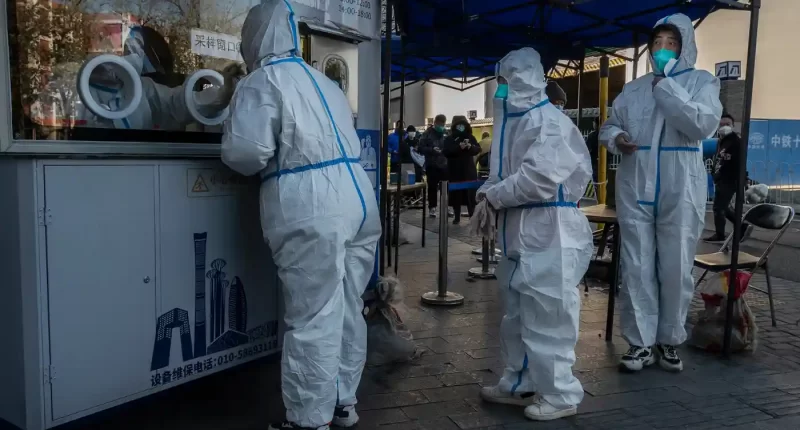Since January 2020, China has classified Covid-19 as a Category B infectious disease but has managed it under Category A protocols, which give local authorities the power to put patients and their close contacts into quarantine and lock downs.
Category A diseases include bubonic plague and cholera, while Sars, Aids and anthrax fall under Category B. Category C diseases include influenza, leprosy and mumps. Infectious diseases that can be easily spread and have a high fatality rate are classified as Class A or Class B but managed as Class A.
But an unnamed infectious disease expert told Chinese media outlet Yicai that more than 95% of China’s cases are now asymptomatic and mild, and the fatality rate is very low. Not at all adhering to Class A management in line with science, Yicai reported on Sunday.
The government and its media is now heavily emphasizing the reduced severity, and is promoting personal mitigation measures and vaccination.
China’s 1.4 billion people largely protected from the virus during most of the pandemic, but was significantly challenged by the emergence of more transmissible variants. Local officials, who faced punishment for failing to control local outbreaks, were increasingly turning to overzealous responses, sometimes over just a handful of cases.
“Local party leaders knew the lockdown was Xi Jinping’s top priority, so to show legitimacy and competency, to appeal to Xi, many took more extreme measures,”
said Prof Chi Chunhuei, the director of Oregon State University’s centre for global health.
But an outpouring of public anger appears to have prompted authorities to lift some of the more heavy restrictions, even as they say the zero Covid strategy, which aims to isolate every infected person, is still in place. There are some fear millions could die if restrictions were lifted entirely.
Throughout the pandemic, Covid restrictions have been managed by different levels of government, resulting in inconsistent and often confusing rules. The easing of restrictions appears to be operating in the same manner.
Chongqing still requires a negative test from within the last three days to enter public places, while Zhejiang province has ended routine Covid tests entirely, according to state media.
The numbers of reported cases each day have also dropped in some areas, as testing is reduced.
There have already been reports of confusion and complaints as the rollback of some zero covid infrastructure clashes with rules still in place, such as the reduction in testing stations causing long queues for those who still need tests to travel or take part in particular activities.
China is the last major country trying to stop transmission completely through quarantines, lockdowns and mass testing. Concerns over vaccination rates are believed to figure prominently in the ruling party’s determination to stick to its hard line strategy.
Only 66% of people over 80 have been given one shot while just 40% have received a booster, according to the commission. It said 86% of people over 60 are vaccinated.






